Tropical collections
Au jardin botanique Jean-Marie Pelt, ce sont près de 12 000 espèces que l’on peut découvrir, dans un jardin de 35 hectares et 2500 m2 de serres tropicales. Plantes rares et menacées, plantes étonnantes ou insolites sont en culture dans l’un des plus grands jardins botaniques de France.
Un vrai musée vivant de la botanique !
Back
to
top
Le plan des serres tropicales
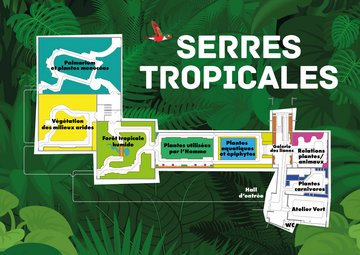
Palmarium and endangered plants
Palmarium and endangered plants
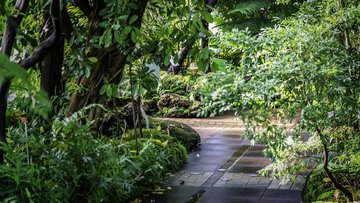
In this greenhouse, rare and endangered species are cultivated, mainly from the islands of the Indian Ocean: the Seychelles, Mauritius, Reunion or the Rodrigues Islands.
In the imposing area dedicated to Reunion Island, one of the last examples of Saribus jeanneneyi, one of the rarest palms in the world, is on display, as well as other unusual palms, such as the Dypsis decaryi, also known as the triangle palm, the white palm kernel, Dictyosperma album, or the bottle palm, Hyophorbe lagenicaulis.
Rare species, like the nettle wood, Obetia ficifolia, or the Hibiscus liliflorus, extinct in the wild, are preserved here.
Visitors will also be able to admire the remarkable foliage of the emblematic Traveller's Tree, the stilt-rooted Pandanus and the impressive tree ferns originally from Australia.
This greenhouse clearly illustrates the crucial role played by the Botanical Garden in the preservation of endangered species.

In this greenhouse, rare and endangered species are cultivated, mainly from the islands of the Indian Ocean: the Seychelles, Mauritius, Reunion or the Rodrigues Islands.
In the imposing area dedicated to Reunion Island, one of the last examples of Saribus jeanneneyi, one of the rarest palms in the world, is on display, as well as other unusual palms, such as the Dypsis decaryi, also known as the triangle palm, the white palm kernel, Dictyosperma album, or the bottle palm, Hyophorbe lagenicaulis.
Rare species, like the nettle wood, Obetia ficifolia, or the Hibiscus liliflorus, extinct in the wild, are preserved here.
Visitors will also be able to admire the remarkable foliage of the emblematic Traveller's Tree, the stilt-rooted Pandanus and the impressive tree ferns originally from Australia.
This greenhouse clearly illustrates the crucial role played by the Botanical Garden in the preservation of endangered species.
Dryland vegetation
Dryland vegetation
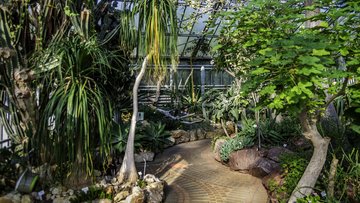
This greenhouse displays plants that have adapted to extreme living conditions: lack of water, high sunlight exposure, strong winds, and wide temperature variations. Impressive cacti, large euphorbias and other lesser known but equally spectacular plants punctuate the visit.

This greenhouse displays plants that have adapted to extreme living conditions: lack of water, high sunlight exposure, strong winds, and wide temperature variations. Impressive cacti, large euphorbias and other lesser known but equally spectacular plants punctuate the visit.
Tropical rainforest
Tropical rainforest
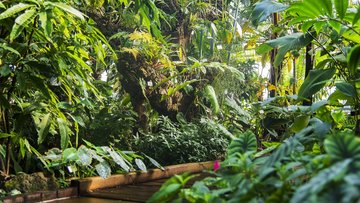
Welcome to the undergrowth of a tropical rainforest.
Lush vegetation, extravagant foliage, lianas... This is one true jungle ! In this greenhouse, it is of course impossible to grow trees of gigantic dimensions; in the wild they can reach up to 50m! However, the undergrowth of rainforests, consisting of thick vegetation of more modest size, which has been able to adapt to the lack of light due to the forest canopy, is perfectly represented here.

Welcome to the undergrowth of a tropical rainforest.
Lush vegetation, extravagant foliage, lianas... This is one true jungle ! In this greenhouse, it is of course impossible to grow trees of gigantic dimensions; in the wild they can reach up to 50m! However, the undergrowth of rainforests, consisting of thick vegetation of more modest size, which has been able to adapt to the lack of light due to the forest canopy, is perfectly represented here.
Plants used by man
Plants used by man
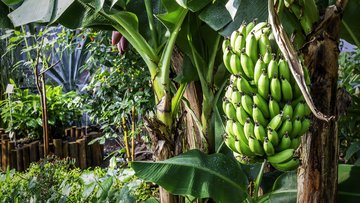
Plant biodiversity is vital for humans to feed on, cure and clothe themselves.
This greenhouse exhibits some of the most cultivated species in tropical regions for their numerous uses: medicinal, cosmetic, food, industrial...

Plant biodiversity is vital for humans to feed on, cure and clothe themselves.
This greenhouse exhibits some of the most cultivated species in tropical regions for their numerous uses: medicinal, cosmetic, food, industrial...
Aquatic and epiphytic plants
Aquatic and epiphytic plants
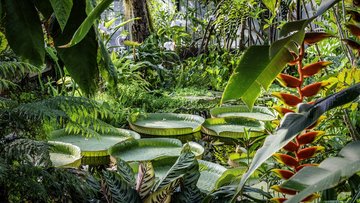
In this greenhouse floating, aquatic and semi-aquatic plants illustrate the diverse ways water plants adapt, like the giant Amazonian water lily (Victoria cruziana), the Rhizophora with stilt roots or the Avicennia.
Epiphytic species such as “Pele’s hair” or “grandpa’s beard” (Tillandsia usneoides) take advantage of atmospheric humidity.

In this greenhouse floating, aquatic and semi-aquatic plants illustrate the diverse ways water plants adapt, like the giant Amazonian water lily (Victoria cruziana), the Rhizophora with stilt roots or the Avicennia.
Epiphytic species such as “Pele’s hair” or “grandpa’s beard” (Tillandsia usneoides) take advantage of atmospheric humidity.
Liana gallery
Liana gallery
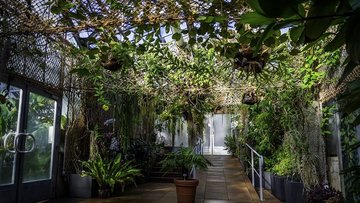
In tropical and temperate climate forests alike, light is essential for the survival of plants. While trees develop a self-supporting structure thanks to their trunks, allowing them to rise above others, a large number of species are able to climb up these same trees without having to make too much effort. These lianas, which are found all over the world in a large number of plant families, are the result of many different evolutions: coiled stems, modified leaves or even adventitious roots. They can use anything to climb up to the canopy.

In tropical and temperate climate forests alike, light is essential for the survival of plants. While trees develop a self-supporting structure thanks to their trunks, allowing them to rise above others, a large number of species are able to climb up these same trees without having to make too much effort. These lianas, which are found all over the world in a large number of plant families, are the result of many different evolutions: coiled stems, modified leaves or even adventitious roots. They can use anything to climb up to the canopy.
Plant-animal relationships
Plant-animal relationships
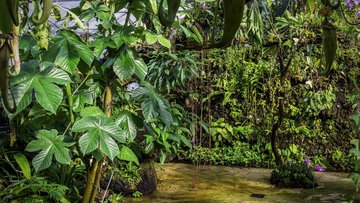
The relationships between plants and animals are countless, and are the source of incredible diversity through coevolution.
Discover some spectacular examples in this unique greenhouse: Nepenthes (highly specialised carnivorous plants), myrmecophilous plants (living with ants), or plants with water reserves where frogs and crabs go frolicking... But also plants capable of defending themselves against herbivores and others that exploit animals to disperse pollen or seeds!

The relationships between plants and animals are countless, and are the source of incredible diversity through coevolution.
Discover some spectacular examples in this unique greenhouse: Nepenthes (highly specialised carnivorous plants), myrmecophilous plants (living with ants), or plants with water reserves where frogs and crabs go frolicking... But also plants capable of defending themselves against herbivores and others that exploit animals to disperse pollen or seeds!
Carnivorous plants
Carnivorous plants
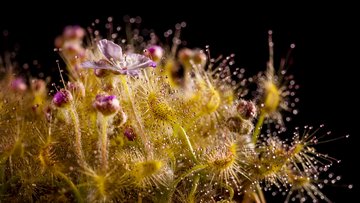
The Jean-Marie Pelt Botanical Garden has a large collection of carnivorous plants, with over 650 species to this day.
It is one of the largest in France and is also recognised at a European level.
These fascinating plants never cease to amaze us. They feed our wildest fantasies, delight our younger children while intriguing the older ones thanks to their active or passive trapping mechanisms.
The design of this greenhouse is innovative: the plants are presented not only individually, but through their native habitats. 15 different ecosystems have been recreated, from the Fynbos of South Africa to the Tepui of Venezuela, via the limestone cliffs of the Mexican mountains, while integrating the diversity of plant species that thrive there.

The Jean-Marie Pelt Botanical Garden has a large collection of carnivorous plants, with over 650 species to this day.
It is one of the largest in France and is also recognised at a European level.
These fascinating plants never cease to amaze us. They feed our wildest fantasies, delight our younger children while intriguing the older ones thanks to their active or passive trapping mechanisms.
The design of this greenhouse is innovative: the plants are presented not only individually, but through their native habitats. 15 different ecosystems have been recreated, from the Fynbos of South Africa to the Tepui of Venezuela, via the limestone cliffs of the Mexican mountains, while integrating the diversity of plant species that thrive there.



